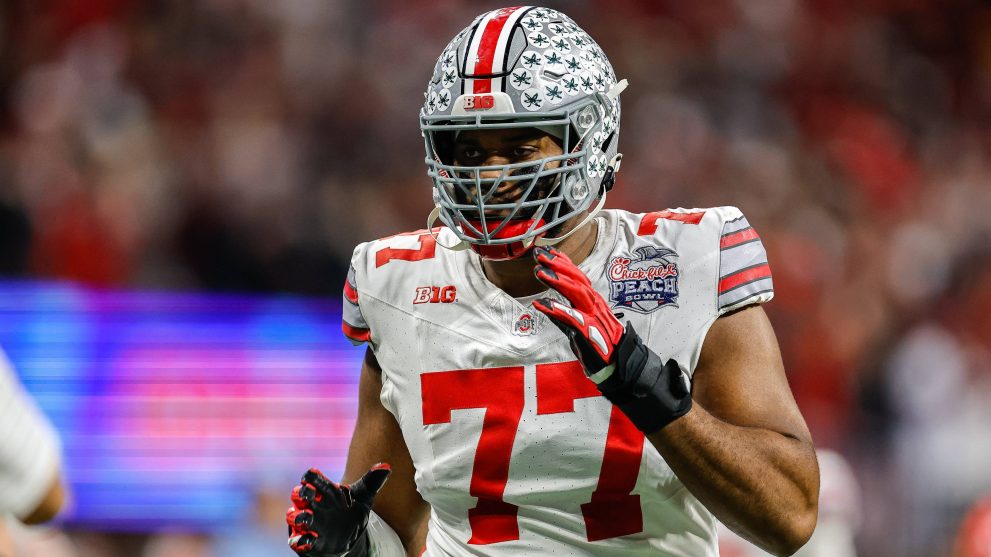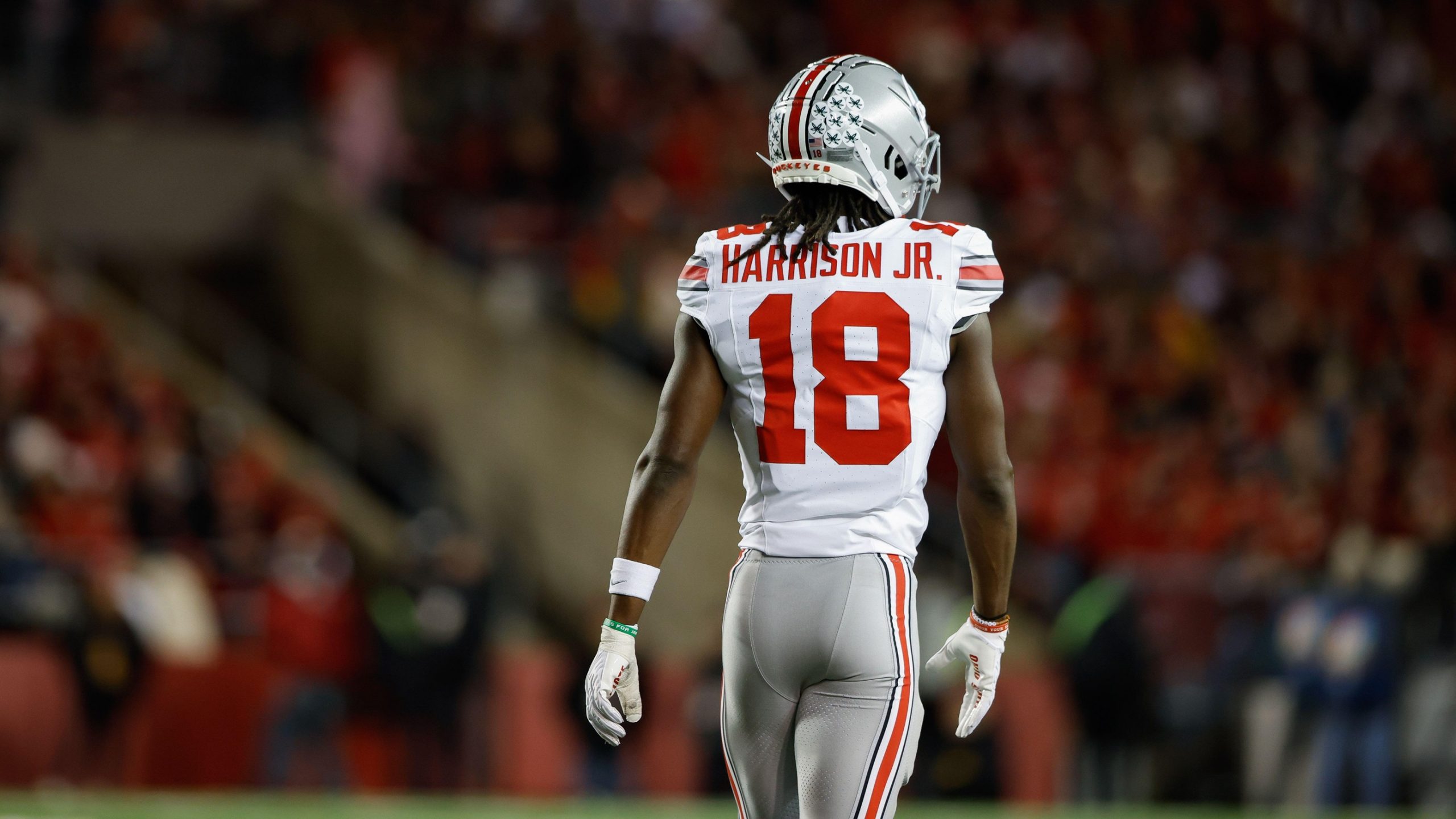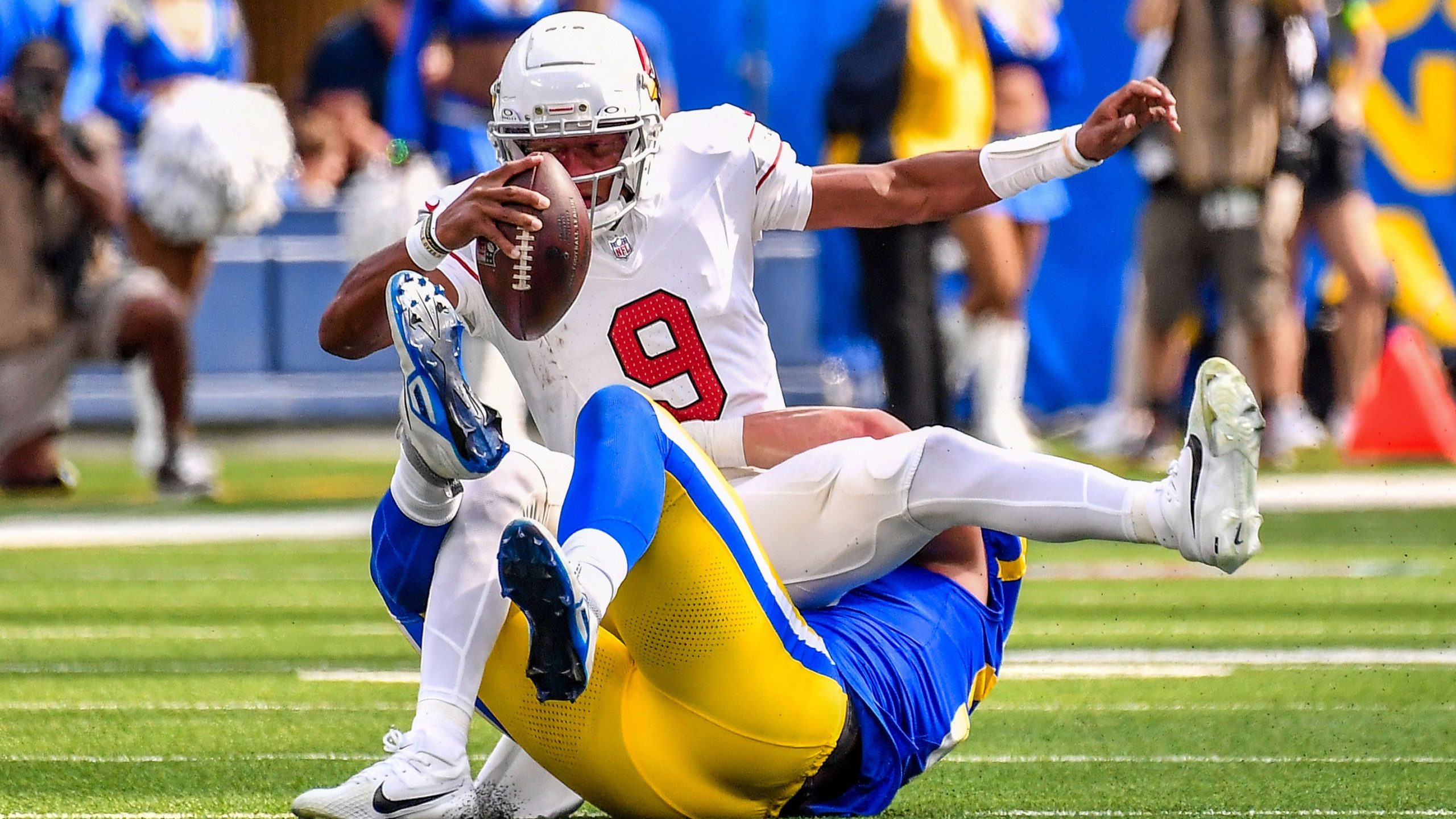Monti Ossenfort was an ice-in-the-veins wheeler and dealer during the NFL draft, which was captured brilliantly by the Arizona Cardinals’ content department.
A recent episode of Flight Plan showed the new general manager making a terrific trade down with the Texans that netted Houston’s first-round pick in 2024.
Monti Ossenfort working the phones before the Texans trade. Inject this into my veins. pic.twitter.com/eUKNxXouai
— Kyle Odegard (@Kyle_Odegard) June 9, 2023
It also showed Ossenfort’s urgency to trade up from No. 12, which he did by going to sixth overall. The prize? Ohio State left tackle Paris Johnson.
It’s easy to see Johnson’s size and movement skills on tape, and StatsBomb recently did a great job of illustrating his strengths via a pair of advanced statistical radar charts.
Here is a more in-depth look at how Johnson performed during his 802 snaps last season (exact numbers are approximations based on the charts):
Pass Protection
Johnson was between good and elite in a number of different pass protection metrics. He allowed impact plays on only 2% of his snaps, which was so good it was nearly off the charts.
He was again in the upper quartile in sacks allowed, though he dipped slightly in pressures allowed – albeit still finishing comfortably above average.
Johnson’s least-impressive metic was his 3.3-second time to pressure, which measures the average time elapsed between the snap and a pressure on all pressures allowed. Johnson finished middle of the pack in that one.
Paris 😍 @Kyle_Odegard https://t.co/BBfODhjQCI
— Kev Lawson (@Edit_Kev) July 9, 2023
Johnson had an average length of engagement on pass plays of around 1.7 seconds, which was an elite figure and seems like it should have some predictive power as he heads to the NFL.
Johnson was a 1-on-1 pass-blocker more than half the time, which was among the highest rates in the country, making his pass-block numbers all the more impressive.
Run Blocking
An offensive line prospect goes top-10 because of his pass-blocking ability, but it sure doesn’t hurt to have a mauler as well. Johnson also graded out well in the run-blocking categories.
Ohio State’s rushing success of 74% when running behind Johnson was elite, and they averaged about 6.0 yards per carry in such scenarios.
Don’t mind me, just watching Paris Johnson block dudes into oblivion pic.twitter.com/vrq6w9s9kB
— Kyle Odegard (@Kyle_Odegard) July 10, 2023
Johnson was engaged with the defender for about 1.9 seconds on running plays, which was among the best in the nation.
Johnson wasn’t dominant but still above average in percentage of run-plays allowing a disruption (about 3.4%). Meanwhile, run-stuffs when he was the primary blocker on a snap were basically non-existent.
Conclusion
StatsBomb rolled out these data charts for the top six drafted offensive linemen, and Johnson’s was the most impressive.
That correlates with Ossenfort’s strong desire to land him as the team’s left tackle of the future.
From what I have heard, Johnson will likely begin the season playing right tackle, and there could be some growing pains as he bulks up and learns that position.
But these charts give an idea of his upside, as Johnson has both the measurables and the statistical production to become a franchise blindside blocker that can be a plus in the run and pass game for years to come.







